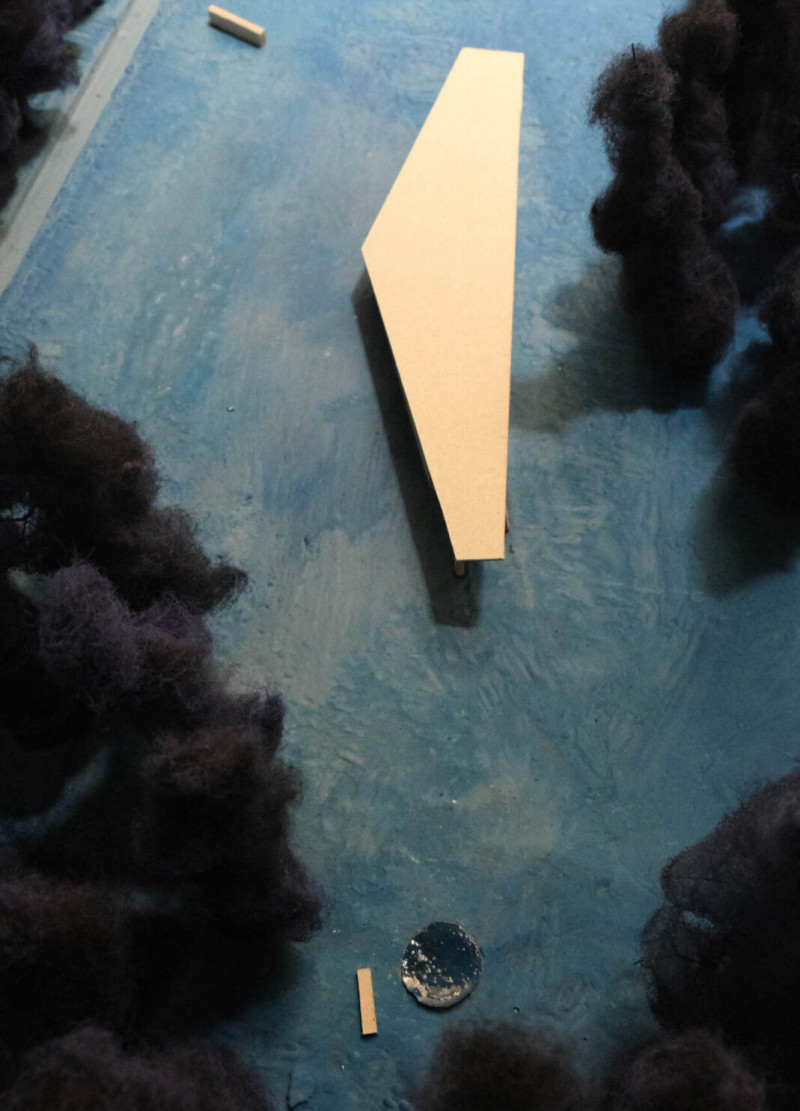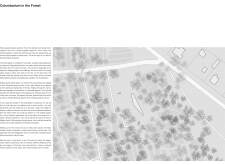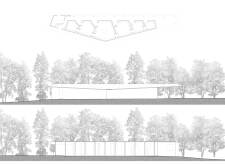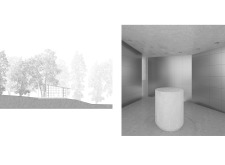5 key facts about this project
The main function of the Columbarium is to provide a dignified and peaceful setting for the interment of ashes, while also nurturing a space for visitors to gather in remembrance and contemplation. By embedding this structure within the forest, the design fosters a unique relationship between the architecture and the natural surroundings. This choice not only enhances the aesthetic qualities of the project but also establishes a deeper connection to themes of nature, life, and continuity.
Critical components of the Columbarium include its pavilion-like building, designed to accommodate gatherings and personal reflection. The layout of the pavilion encourages both private introspection and communal interactions, creating a versatile space that caters to varying needs. The structure is oriented to invite natural light, potentially utilizing large windows or glazed sections that frame views of the forest, allowing occupants to feel both sheltered and connected to the outside world.
Accompanying the pavilion is a thoughtfully designed pond, which plays a significant role within the project. The water feature serves both practical and symbolic purposes, as it provides a calming auditory backdrop that enhances the overall atmosphere of peace. The pond may also serve as a gathering point, drawing visitors toward its beauty while symbolizing renewal and reflection.
Detailing within the design reflects a commitment to materiality that resonates with its natural environment. Although specific materials used are not outlined, it can be inferred that choices such as concrete, wood, and glass play a critical role in achieving an authentic connection to the site. Concrete provides structural integrity while embodying a sense of permanence. Wood elements can introduce warmth and a tactile quality, fostering an inviting atmosphere, while glass can facilitate transparency, merging interior and exterior spaces seamlessly.
The project exhibits unique design approaches that differentiate it from traditional columbarium designs. One notable aspect is its emphasis on integration with the landscape, opting for a low-profile architectural expression that minimizes disruption to the surrounding flora. This approach encourages an appreciation for the natural beauty of the forest, creating an environment that feels both timeless and respectful. The careful orchestration of spaces leads visitors through a journey, guiding them from the entry point through landscaped paths toward the central pavilion and pond, thereby enhancing the experience of remembrance.
Furthermore, the circulation paths designed within the project enhance the visitor experience, encouraging a sense of exploration and reflection as individuals move throughout the space. These carefully curated pathways invite contemplation, allowing visitors to engage with both the architecture and the natural environment in a meaningful way.
This well-considered architectural design not only fulfills its functional purpose but also provides a serene, contemplative experience reflective of the cycles of life. The blend of man-made and natural elements fosters a rich interaction that can be appreciated on both personal and communal levels.
For those interested in exploring the broader design intentions behind the Columbarium in the Forest, it is beneficial to delve deeper into the architectural plans and sections. Reviewing these elements may offer further insights into the architectural ideas and design techniques that underpin this carefully crafted project, highlighting its thoughtful integration into the landscape and the meaningful experiences it seeks to evoke for visitors.


























